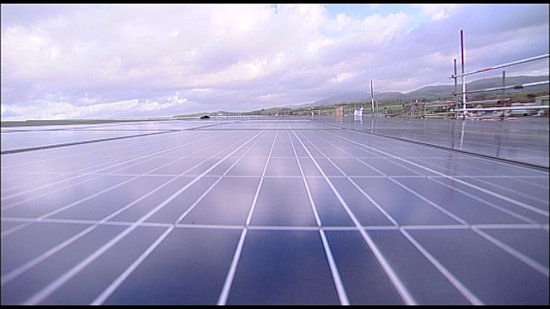
Updated: Leading ‘Silicon Module Super League’ (SMSL) member Trina Solar has lowered its planned global solar power plant project connections for 2016, while reiterating full-year module shipment guidance.
In reporting first quarter 2016 financial results, Trina Solar revised down its project completions guidance for the year from 750MW to 850MW to between 400MW and 500MW, without providing an explanation for the reduction in its financial statement.
Unlock unlimited access for 12 whole months of distinctive global analysis
Photovoltaics International is now included.
- Regular insight and analysis of the industry’s biggest developments
- In-depth interviews with the industry’s leading figures
- Unlimited digital access to the PV Tech Power journal catalogue
- Unlimited digital access to the Photovoltaics International journal catalogue
- Access to more than 1,000 technical papers
- Discounts on Solar Media’s portfolio of events, in-person and virtual
Or continue reading this article for free
However, Trina Solar reiterated that it still expected module shipments to be in the range of 6.3GW to 6.55GW in 2016, with 220MW to 260MW being shipped to its downstream projects, compared to previous guidance of 450MW to 550MW shipped to its downstream projects.
Shipments
Trina Solar reported first quarter module shipments of 1,423.3MW, consisting of 1,370.4MW of external shipments and 52.9MW of shipments to its downstream power plant projects. Total module shipments decreased 19.9% sequentially and increased 38.7% year-over-year.
The sequential decrease in shipments was primarily due to seasonality, according to the company, while the year-over-year increase was mainly driven by key markets in China, the US and India, and was partially offset by the decrease in demand from Japan and Europe in the quarter, Trina Solar said.
Trina Solar said it expected module shipments of the second quarter of 2016 to be in the range of 1.5GW and 1.6GW, of which 40MW to 50MW would be used in its downstream PV projects.
Financials
Revenue in the first quarter was US$816.9 million, a decrease of 15.1% from the fourth quarter of 2015 and an increase of 46.4% from the first quarter of 2015.
Gross profit was US$139.7 million, a decrease of 23.8% from the fourth quarter of 2015 and an increase of 39.2% from the first quarter of 2015. Gross margin was 17.1%, compared with 19.1% in the fourth quarter of 2015 and 18.0% in the first quarter of 2015.
According to the company, the sequential decrease in gross margin was mainly due to lower average selling prices (ASPs) as a result of price decline in almost all of the major markets and lower downstream revenues, which have relatively high margins compared to the upstream module business.
The year-over-year decrease in gross margin was because ASPs declined at a faster rate than cost reductions.
The company reported an operating income of US$44.8 million, a decrease of 44.9% from the fourth quarter of 2015 and an increase of 53.7% from the first quarter of 2015.
Jifan Gao, Chairman and CEO of Trina Solar, commented, “This quarter was a good start to the year. We posted strong year-over-year growth in major financial and operational metrics, particularly with revenue and net income up 46.4% and 91.3%, respectively. Total module shipments during the quarter increased 38.7% year-over-year to 1.42 GW, which was largely driven by demand from our key markets in the U.S., China, and India. Our shipments in Europe were up two-fold sequentially as a result of our strategic shift in Europe.”
Manufacturing update
Trina Solar continued to add production capacity in the quarter as well as consolidating the acquisition of Netherlands-based solar cell facility, formerly Solland Solar.
In the quarter, Trina Solar expanded its module capacity by 600MW to 5.6GW. Solar cell capacity reached 4.3GW, up from 3.5GW in the previous quarter, an 800MW increase, quarter-on-quarter. Both ingot and wafer capacity remained at 2.3GW and 1.8GW respectively.
Trina Solar noted that a key development in the quarter was that its PERC (Passivated Emitter and Rear Cell) technology for high efficiency cells had ramped to 200MW.
“During the quarter we continued expanding our overseas manufacturing capacity in select markets to meet global demand, especially from the US and Europe. This capacity expansion strategy ensures we retain and grow our competitive position in the PV industry as we focus on improving our profitability. In the first quarter, we acquired a cell factory in the Netherlands and also brought our facility in Thailand online as scheduled, using our 'Honey' state-of-the-art high-efficiency assembly line method,” added Gao.
PV projects update
Trina Solar said that it had connected a total of 101.7MW of utility projects to the grid, consisting 24.3MW in the UK, 50MW in Xinjiang, China and 27.4MW in Yunan, China.
A total of 967.3MW downstream solar projects remained on its balance sheet at the end of the quarter, including 920.8MW in China, 4.2MW in the US, and 42.3MW in Europe. The 920.8MW projects in China consisted of 722.9MW of utility projects and 197.9MW of DG projects.
In the earnings call to discuss first quarter results, managment noted the lowered PV project completions guidance was due to the low visibility of grid connection targets in China for the year.
Management also noted that market demand in China would be lower in the second half of the year, compared to the first half. Overcapacity and a decline in ASPs in China would become an issue in China.
